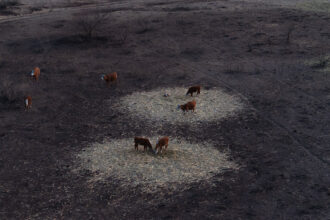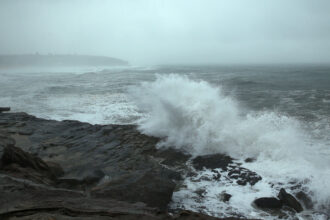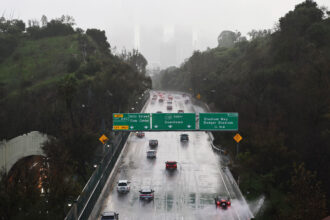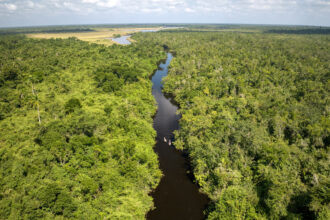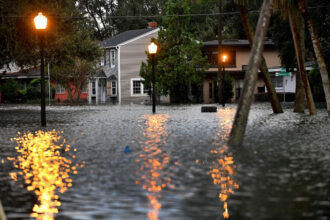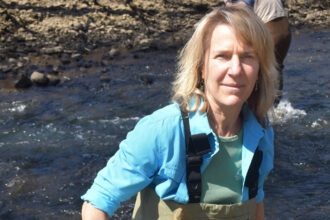Released on March 1, the “Dune 2” movie has already earned over $200 million at box offices worldwide. The movie series is based on the late novelist Frank Herbert’s 1965 sci-fi novel, in which colonizers from other worlds fight among themselves and with an Indigenous population for control of an inhospitable desert planet known as “Arrakis.”
But this sandy universe was largely inspired by a place right here on Earth: The sweeping sand dune ecosystem along the central Oregon coast. In the mid-1950s, Herbert visited Florence, Oregon, while working as a journalist to investigate how engineers and ecologists were trying to stop the landscape’s “moving sands” in an effort to make the area more liveable, reports Oregon Public Broadcast.
Herbert’s article was never published; instead, he transformed it into his most iconic piece of fiction. But it turns out this sci-fi classic parallels many of the same struggles that have played out between humans and nature for residents of the Oregon coast, research reveals—aside from the giant sandworms, thankfully.
Swallowing Sands: In the early 1900s, the sands of coastal Oregon’s dune ecosystems swallowed roads, transportation infrastructure and some buildings across the region. In response, the U.S. Department of Agriculture launched a program to plant European beachgrass to anchor the dunes in place and help stymie the sand’s movement. However, this action has since had unintended consequences: Over time, the beachgrass and other invasive species have spread uncontrollably, edging out native flora and fauna such as the western snowy plover, reports the BBC.
At the same time, extreme storms are eroding the remaining sands, and a 2023 study found that newly planted vegetation can speed up this process.
“We’re losing about five feet [1.5m] of open sand every year,” Dina Pavlis, a longtime Florence resident, author of Secrets of the Oregon Dunes, and member of the Oregon Dunes Restoration Collaborative (ODRC), told the BBC.
The ODRC is now pushing forth a plan to knock down raised knolls of sand with the planted grass—known as foredunes—to make room for open dune restoration. But this process could have its own negative impacts, from destroying habitats for the weasel-like Humboldt martens in the area to leaving beachside houses vulnerable to sand once again.
For his novel, Herbert also gathered insight from native tribes in Washington State, which had “suffered some of the worst environmental harms in the mid-century United States,” wrote Daniel Immerwahr, a professor of history at Northwestern University, in a 2021 opinion essay for The New York Times.
Fact or Fiction? In Herbert’s original “Dune” work, the dedication page reads “to the dry-land ecologists, wherever they may be, in whatever time they work, this effort at prediction is dedicated in humility and admiration.” Many scholars have taken these words to heart, extolling the nuggets of wisdom “Dune” can teach humanity about oil, geoengineering and climate change, reported Jess Romeo for JSTOR Daily in 2021.
But as far as the films go, not everyone agrees that these adaptations focus enough on the environmental issues that helped inspire them.
In an opinion article for Sierra Magazine, film critic Rebecca Long writes that both popular “Dune” movie series, including director David Lynch’s 1984 adaptation and Denis Villeneuve’s “Dune” and “Dune 2,” films “downplay the novel’s environmental message and treat the book’s ecological themes as extraneous rather than essential.”
“The omissions are a shame, since they rob moviegoers (many of whom are unlikely to pick up the nearly 900-page tome) of the opportunity to grapple with serious environmental issues on the big screen,” she writes.
More Top Climate News
I’ve noticed several instances of wildlife popping up in some unexpected places.
Last week, scientists from the New England Aquarium spotted a gray whale off the New England coast—the marine mammal has been presumed extinct in the Atlantic for more than 200 years.
“I didn’t want to say out loud what it was, because it seemed crazy,” Orla O’Brien, associate research scientist in the Anderson Cabot Center for Ocean Life at the New England Aquarium, said in a statement.
A little larger than a school bus, gray whales typically spend their summers in the chilly waters of the Arctic, then migrate south to the Pacific waters of California and Mexico to breed and raise their calves. So what is this one doing on the other side of the U.S.? Scientists say that climate change is likely the main cause, as rising ocean temperatures and other factors have left the Northwest Passage, which links the Atlantic and Pacific, ice-free during the summer in recent years.
Normally, this wall of ice keeps gray whales away from the East Coast, but researchers believe this one may have been able to squeeze through the relatively clear channel this year.
Meanwhile, a rare yellow-billed loon made a visit to the famous Bellagio Fountain in the Las Vegas strip last week. The hotel temporarily paused its iconic water show on Tuesday to avoid stressing out its avian guest, before the Nevada Department of Wildlife safely transported it “to a more suitable and remote location,” department spokesperson Doug Nielsen told the Associated Press.
On a darker note, an endangered red panda was found in luggage, alongside 86 other live animals, at Bangkok’s Suvarnabhumi Airport. Officers arrested six individuals from India for attempting to smuggle the animals to Mumbai, according to a statement. Thailand is a hub for the illegal wildlife trade, and smugglers have been known to use this airport to transport animals to other areas in Asia, reports the Guardian.







